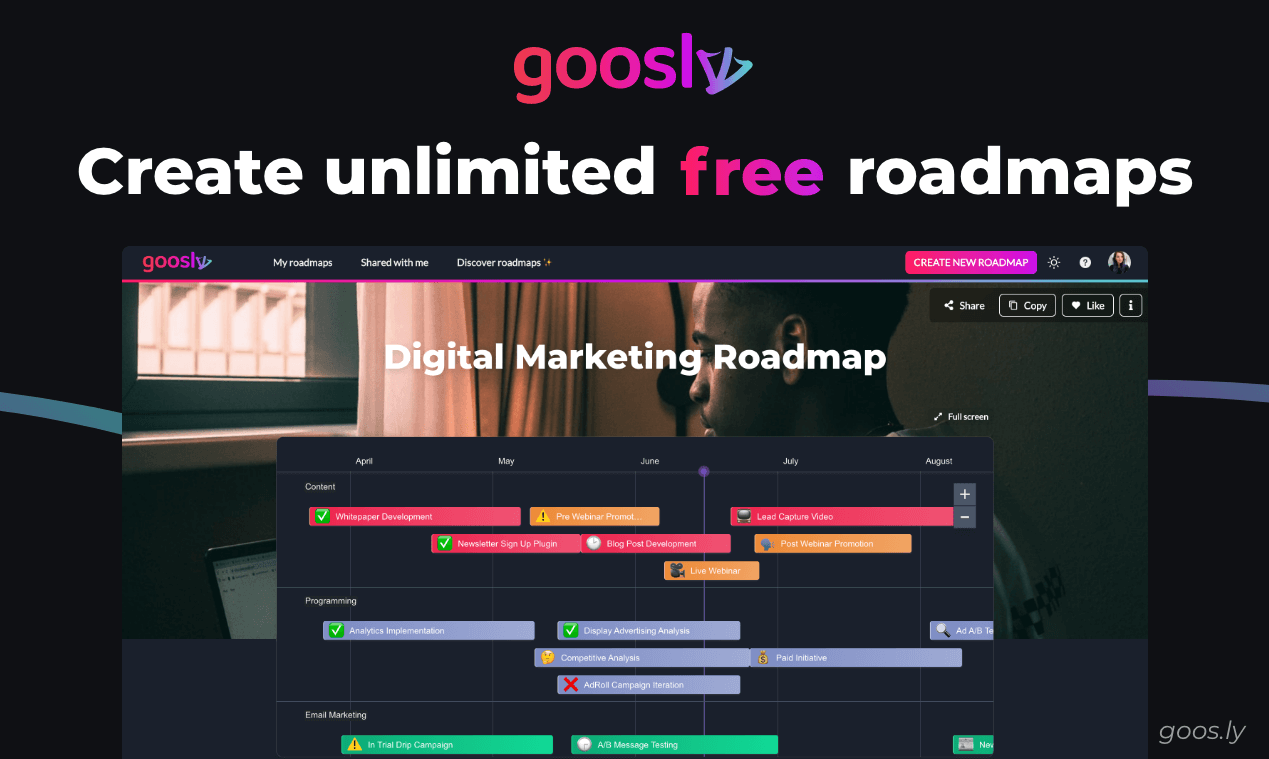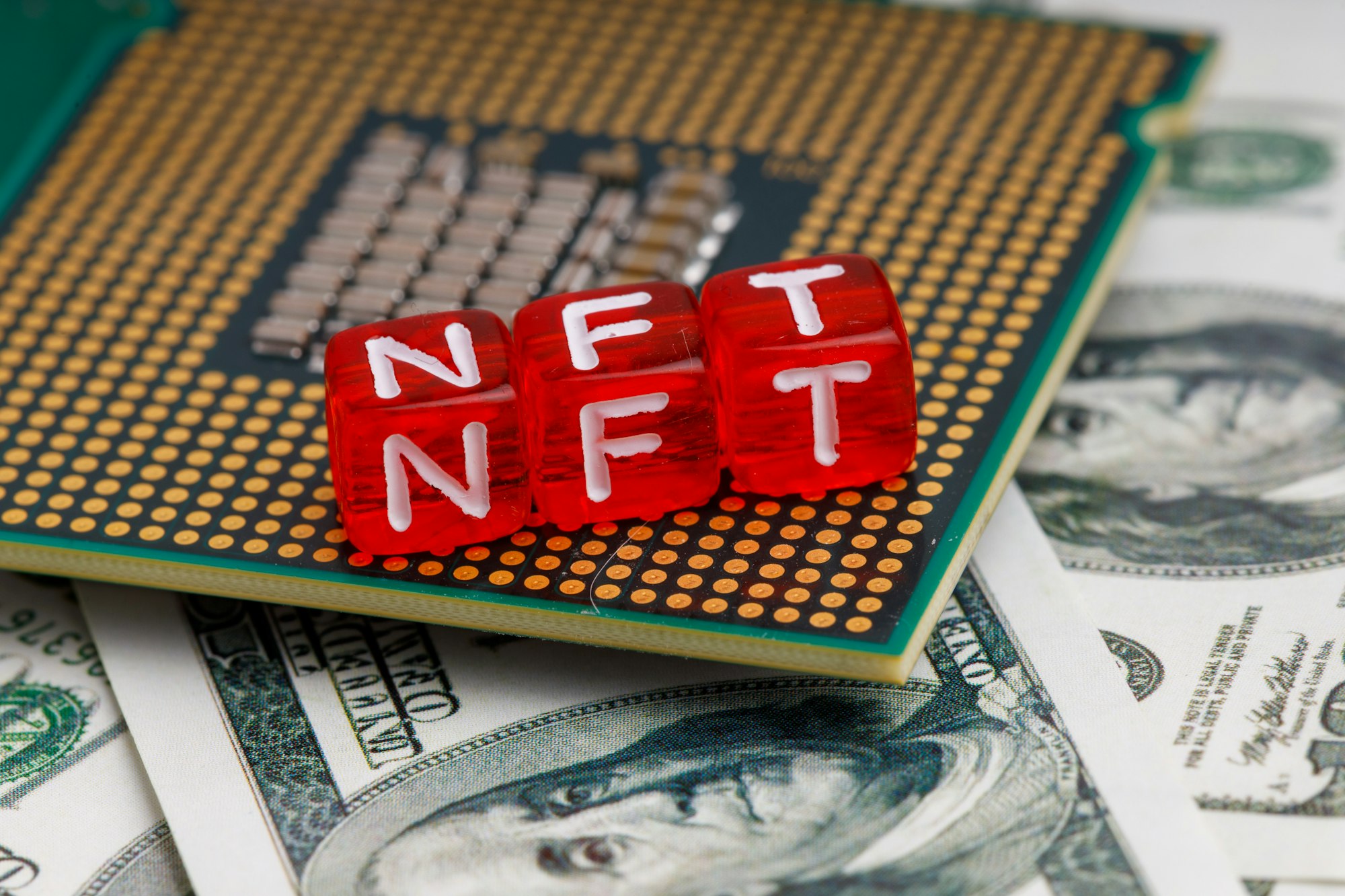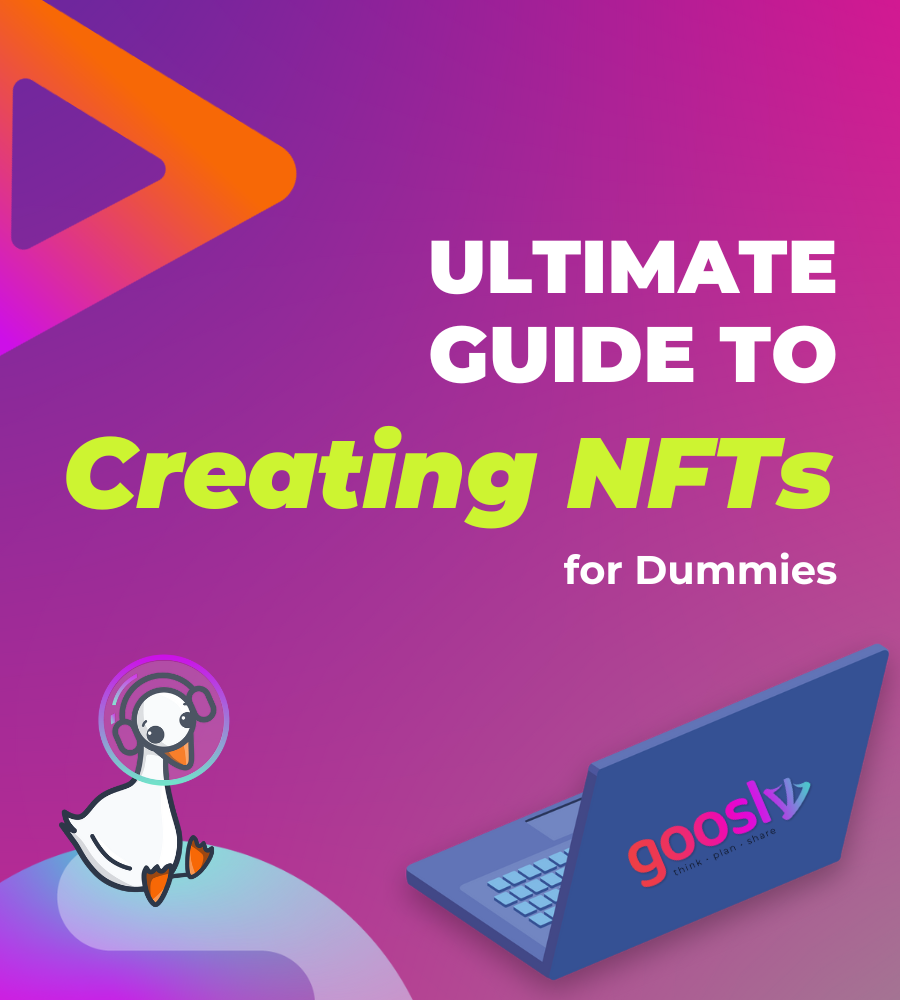What you'll get from this article:
👉 What are NFTs, or Non-Fungible Tokens, and how they operate
👉 The reasons why you should create NFTs
👉 Ways to create your own NFTs
If you're a designer looking to get into the world of NFTs, or you're just curious about what they are, this guide is for you. In this guide we will discuss NFTs, how they work, and some tips on creating your own. We will also explore how designers can use Goosly free roadmap and planning tool to plan their next NFT project. So whether you're a beginner or an experienced designer, read for some helpful tips.
What are NFTs, and why should I create them?
NFTs, or Non-Fungible Tokens, are a type of digital asset that is unique and cannot be interchangeable with other tokens. They often represent individual items or experiences, such as games or digital collectibles. NFTs are created using blockchain technology, which makes them secure and tamper-proof.
There are many reasons why you should create NFTs. Perhaps the most obvious reason is that they can be used to represent unique items or experiences. This can be valuable for collectors who want to own a one-of-a-kind item or for businesses who wish to offer exclusive experiences to their customers. NFTs can also be used to reward fans or customers for their loyalty or support. Pictured below is a popular NFT series, the bored ape yacht club:
Another reason to create NFTs is that they are secure and tamper-proof. This makes them ideal for businesses that want to issue vouchers, tickets, or other digital assets that must be securely tracked and verified. Blockchain technology ensures that all transactions are recorded and cannot be changed without authorization, making it difficult for fraudsters to exploit these assets.
Finally, NFTs offer benefits for designers. One of the reasons NFTs are becoming so popular is because they provide a new way to think about art ownership. Traditionally, a physical asset like property or artwork has been difficult to trade or sell without involving a third party. With NFTs, these assets can be stored and traded securely online without problems. This makes it easier for people like digital artists to buy and sell digital artwork in an NFT marketplace without going through an intermediary.
How do I create NFTs?
There are several ways to create your own NFTs. The most popular method is to use a blockchain platform such as Ethereum or EOS. Most NFT platforms allow you to create tokens that are secure and tamper-proof.
You can also use dedicated NFT platforms such as NonFungible.com, which allow you to create and trade NFTs without needing a blockchain.
Another way to create NFTs is by using virtual reality (VR). This method allows you to create 3D objects and digital art that can be used in VR games or experiences. VR-based NFTs are often called "crypto-collectibles" and can be traded on specialized exchanges.
Finally, you can also plan the creation of your NFTs using a tool such as Goosly. Goosly is free software that allows you to plan the process your NFT creation projects. It's an excellent way for beginners to keep organized and share a project roadmap publicly or with other designers.

What types of content can I include in my NFTs?
NFTs can include a wide variety of content, depending on what the creator wants to represent. Some examples include images, NFT video clips, text, and even games or applications. NFTs can be used to store anything that can be digitized, which makes them incredibly versatile. They are perfect for representing digital assets and can be used to create unique experiences for users.
Types of digital file content that can be included in NFTs are:
- Textual content
- Images
- Audio files
- Videos
How do I share my NFTs with others?
NFTs can be shared with others in a variety of ways. One way is to use a simple URL scheme. For example, if you have an NFT called "foo.nft", you can share it by URL like this: https://foo.nft. This will direct people to the correct page to view your NFT. You can also share your NFTs on social media or embed them on web pages.
What are some best practices for creating and sharing NFTs?"

When creating NFTs, there are a few best practices to remember. First, be sure to make your NFTs easy to share. This will help encourage people to use and promote your tokens. Additionally, use a reliable and secure digital wallet to store your tokens.
Finally, always test your tokens before releasing them to the public. Following these best practices can help ensure a successful NFT launch. The NFT marketplace is a growing industry; you need to know many things before entering it.

Tips on creating NFTs:
1. Do your research. The NFT market is still relatively new, so it's essential to do your research before investing in any tokens. Read reviews and compare different platforms and projects before making a decision.
2. Beware of scams. As with any new industry, there are bound to be scammers lurking around. Be sure to do your due diligence before investing in any project and only use reputable exchanges and wallets to sell NFTs.
3. Stay up to date on news and trends for NFT creation. NFT marketplaces are constantly evolving, so staying current on the latest news and trends is important. This will help you make informed decisions about which tokens to invest in.
Summing things up
NFTs, or Non-Fungible Tokens, are a type of digital asset that is unique and cannot be interchangeable with other tokens. NFTs are created using blockchain technology, which makes them secure and tamper-proof. They offer several benefits for designers, including experimenting with new technologies and creating unique content.

